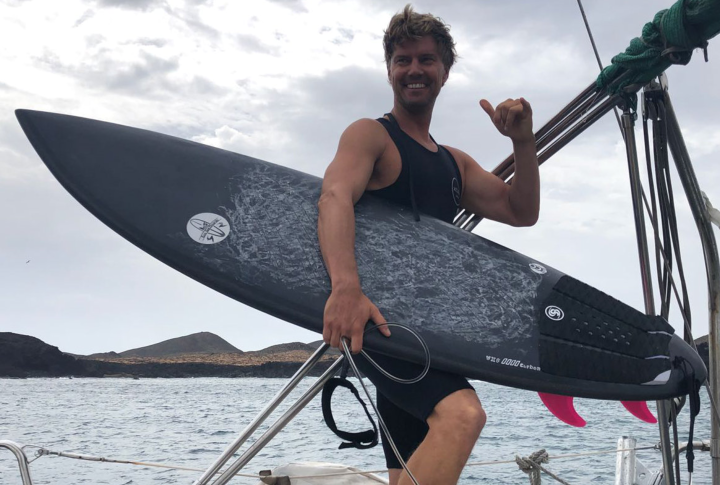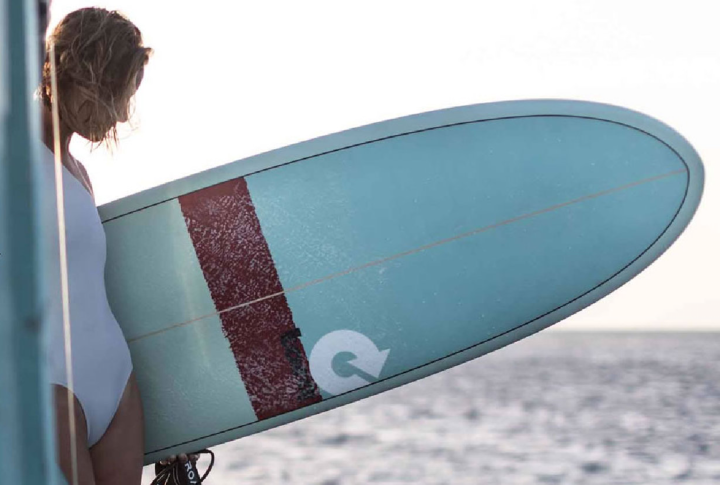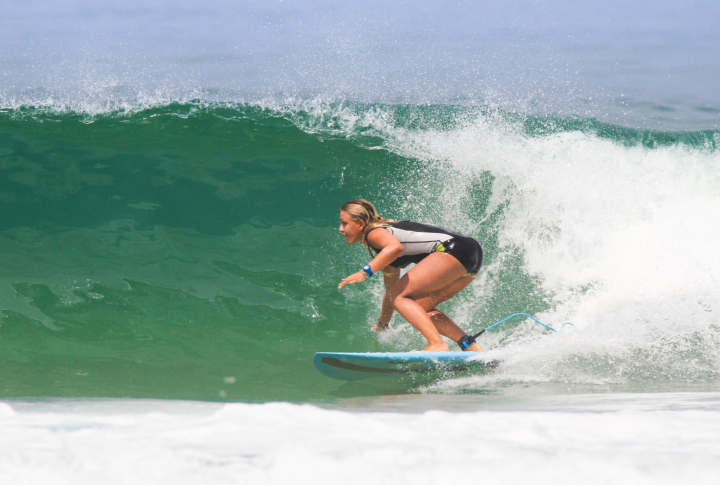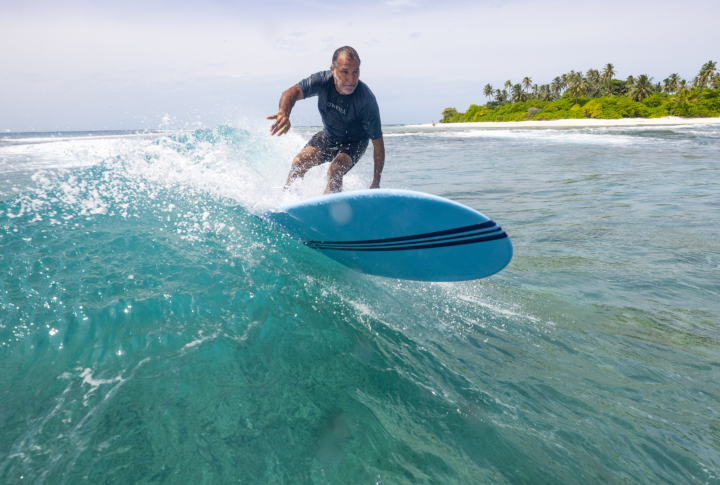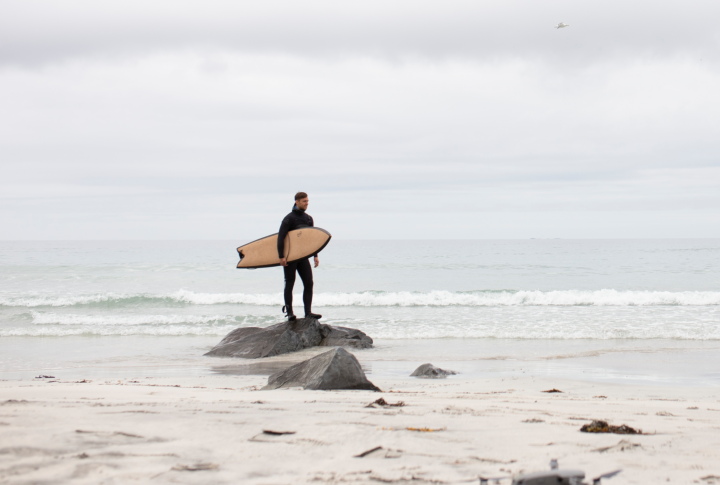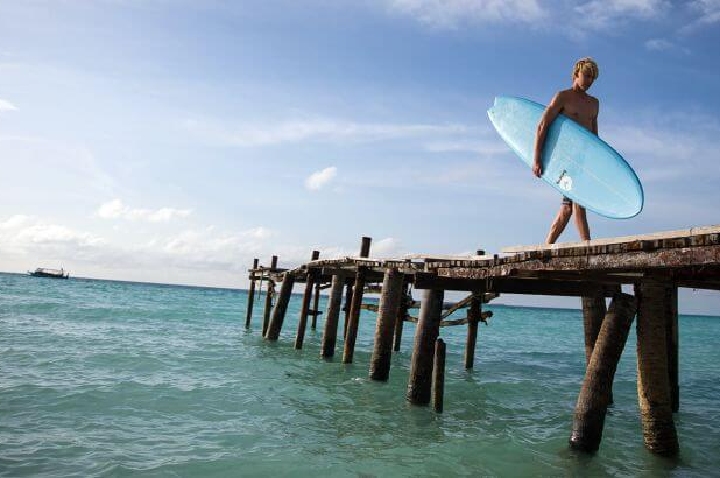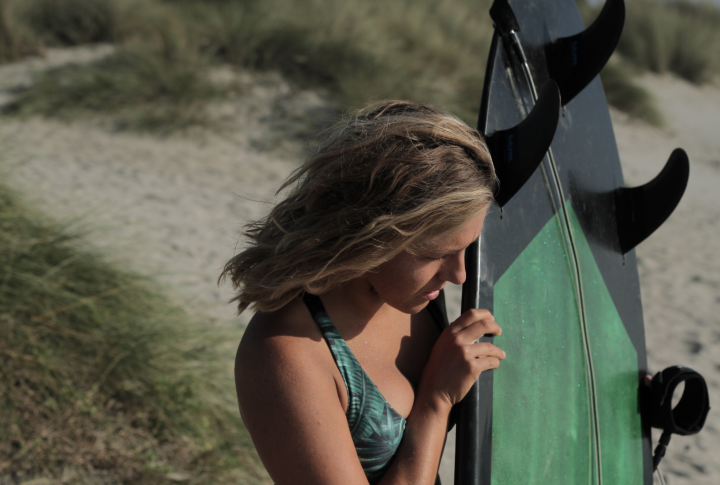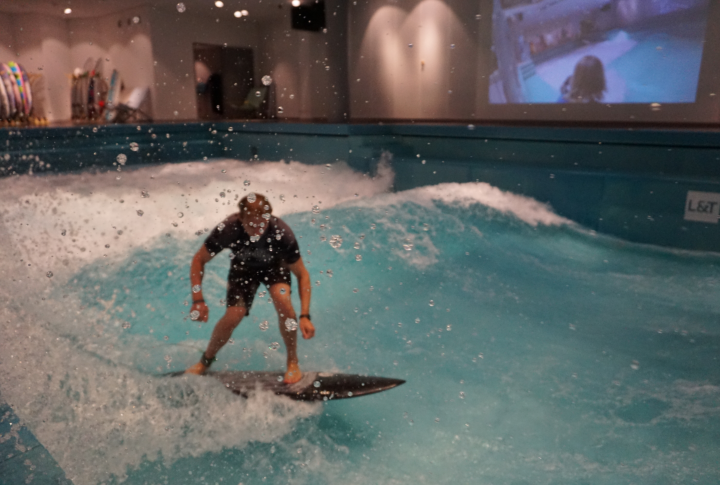Which Wave Rider Surfboard should I buy? Large guide & buying advice
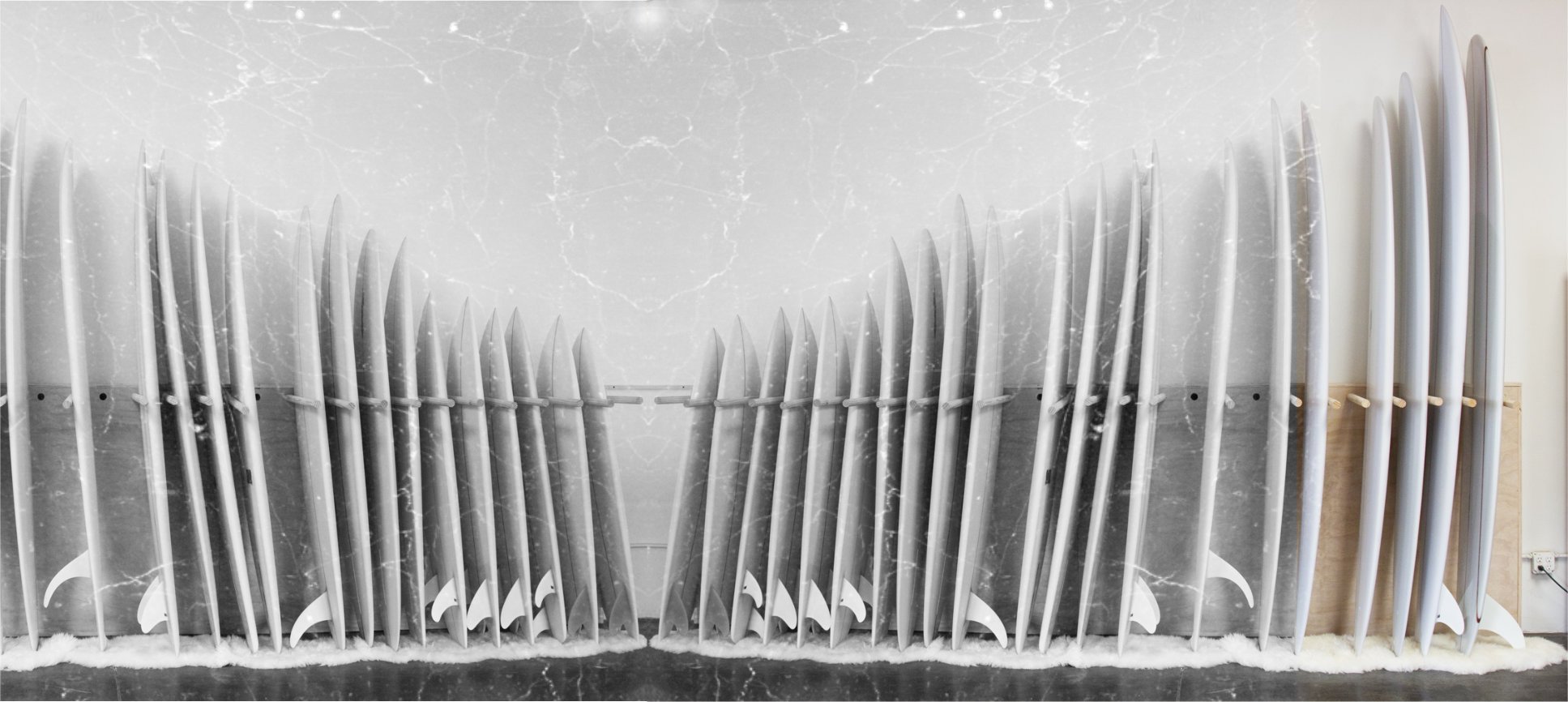
Which Surfboard suits me? All in our guide and shopping advice.
We would like to give you a few pointers on which surfboard might suit you. You can find more information in our big buying advice and in our FAQs surfboard guide.
- Body size
- Weight
- Skill level
- Surfing style
- Paddle power
- Shape of the wave (powerful waves, soft waves?)
- whether beachbreak, reefbreak, pointbreak
If you have thought about these points, take some time to chat, join our team and let us advise you extensively about wave rider surfboards and their different characteristics. We are happy about nice contacts and if we can help you with your decision making.
Contact us via mail or live chat. We will be happy to call you back to find the right board for you.
You want to buy a surfboard and need some buying advice?
Aloha Surferdude, you are looking for a surfboard? Your old wave surfboard got smashed in the last session? You want to expand your quiver and set yourself up wider? Or you want to buy your first wave rider? Then let's take a relaxed, chilled out look at it, because good things come to those who wait ;-)
Buying a surfboard should be well thought out. There's nothing less relaxing than being annoyed by the wrong surfboard. After the surf session, everyone is chilling out drinking a margarita or a beer and you can't join in because you just didn't have any fun in the water.
To avoid this, we would like to support you with our years of experience and thus simply avoid certain mistakes when buying a surfboard. We at Hang Loose Surfshop often prefer retro surfboards and singlefin surfboards to achieve our moments of happiness while surfing. The world of surfboards and surfers is a vast and diverse one, and little things about a surfboard shape make or break bliss or a Titanic-like scenario.
We offer you a fine selection of retro shapes, such as fishboards, singlefinboards and longboards and, as a contrast, high-performance machines when the waves are big, the crowd small and the focus big.
Which surfboard should I buy as a beginner?
ATTENTION: Not every surfboard is suitable for beginners.
The best boards for absolute beginners are foam boards, so-called foamies. Softboards minimise the risk of injury for you and your fellow surfers. As a small upgrade, a Malibu or Mini Malibu Shape is recommended. These boards are forgiving and guarantee you a high wave yield. If you surf safely with these boards, you are ready for the next step.
Which surfboard is perfect for me?
If you surf small waves, you surf a mini-Malibu safely and are looking for a smaller surfboard, then an Evolution Shape or Funboard is the right choice. These shapes are a little more agile, but still more forgiving than short boards. Do you want to surf a short surfboard? Then a fishboard is the right choice. Only when you can surf these boards safely is it advisable to switch to a hybrid board and then a short board. A surfboard suits you if you can surf enough waves with it safely. Together we will find the surfboard that suits you!
How much does a surfboard cost?
A surfboard is available from €250. The length and the material used are decisive for the costs. Longer surfboards, more material used, higher costs. Cheaply made surfboards start at 300€. High-quality surfboards are available from 500€. Environmentally friendly, sustainably produced surfboards made with high-quality materials can cost between €900 and €1000. But they are usually worth the money. For longboards from 8ft, you can add another 250€ on top.
How big should a surfboard be?
The dimensions of a surfboard are measured in feet (1 foot = 30.48 cm) and inches (1 inch = 2.54 cm).
12 inches = 1 foot.
The length + width and thickness of the surfboard results in the volume.
- Surfboards for beginners are between 7 and 8 feet long and have a width of at least 21 inches.
- Funboards and Evolution shapes are between 6ft 8 inches and 7 ft 6 inches long and have a width of 20 - 21 inches.
- Fishboards 5-6ft long width 21-23 inches.
- Hybrid boards are between 5-7 ft long and have a width between 19-21 inches.
- Shortboards are between 5-7ft and have a width of 17-20 inches wide.
- Longboards are from 9ft long and have a width from 22 inches.
Different shape, different size.
How heavy is a surfboard?
How much a surfboard weighs depends on the length and the materials used. As a point of reference, you can take these weights for a surfboard.
- Shortboard between 2-3 kg
- Hybridshape between 2,5-3,5Kg
- Fishboard between 2,5 -3,5Kg
- Funboard between 3 - 4,5 Kg
- Minimalibu between 3 - 4,5 Kg
- Longboard between 4 - 7Kg
Before you buy a surfboard, find out the weight of your surfboard.
How much volume should a surfboard have?
The litres / volume of a surfboard depends on a few factors. Your ski level, your paddle power, your weight and which waves you want to surf with the board. As a rough guide, you can use this formula:
- Beginner: 0,75 x body weight (0,75 x 80Kg = 60Liter)
- Intermediate: 0,45 x body weight (0,45 x 80Kg = 36Liter)
- Advanced: 0.35 x body weight (0.35 x 80Kg = 28 litres)
You want to know exactly which surfboard with how much volume suits you?
Use our professional buying advice.
Which surfboard is perfect for kids?
A Mini-Malibu Shape is the perfect surfboard for children and beginners. Children who are not yet safe surfers should take their first steps on softboards, because foamies protect you from injuries. A surfboard for children who are just starting to surf should not be so long. A length between 6 and 7 ft is recommended.
Which fin setup should I choose for a surfboard?
There are surfboards with all kinds of fin set ups. Which fin setup you should choose depends on what kind of waves you want to surf, which shape you prefer and which surf style you follow.
-
2 + 1: The 2 + 1 setup is also very popular with soul surfers. This ensures that you can surf the boards in a more performance-oriented way, because the two small side fins give the board more hold in the wave wall, especially for down-the-line rides.This fin setup is also very demanding to surf and is often used on longboards, funboards and some hybrid shapes.Twin Fin: A surfboard with a twin fin setup is very manoeuvrable. This gives the board its characteristic retro surfing behaviour. Retro shapes such as a Mini Simmons, Fishboard and also some hybrids can be surfed as a twin fin
-
Thruster: With this fin setup, your surfboard can be surfed very precisely and gives you the necessary drive during turns. The Tri Fin setup is the most commonly used setup. Almost all high performance shortboards, funboards, mini malibus and hybrid shapes.
-
Quad Fin: A surfboard with a quad fin setup is mostly used in performance oriented surfboards, fishboards and hybrid shapes and gives your surfboard more drive, speed and control at the same time. Perfect for down the line waves.
- 5 Fin Setup: Here you can change your fins to make your surfboard a twin fin, thruster or quad. By changing the fins, you change the surfing behaviour of your board enormously. Quad setups are often used in hybrid shapes and fun boards.
After these 6 important fin setups there is a special fin setup.
- 4 + 1: The 4 + 1 setup is also very popular with soul surfers. For this, a single fin surfboard is supplemented by four small side fins, which ensures that you can surf the boards as a quad, single fin and with a 2 + 1 fin setup. A popular shape from the 70s A Bonzer is surfed with 4 very small sides and a single fin.
Hang-Loose-Surfshop.com Tip:
A thruster makes surfing a surfboard much easier. If you have a good surfing level, experiment with other set ups.
Which surfboard for which waves?
Which surfboard is suitable for which wave is a very multi-faceted topic. We would like to summarise the most important waves and boards here.
- Small soft waves - Minimalibu, Longboard, Fishboard, Funboards and some Hybrid Shapes.
- small powerful waves - shortboard and hybrid shapes
- medium soft waves - funboards, minimalibus, longboards, fishboards and hybrid surfboards
- medium powerful waves - shortboards and hybrid shapes
- big soft waves - longboards, minimalibus, fishboads and hybrid surfboards
- big powerful waves - shortboards, guns and performance longboards
- Beachbreaks - Minimalibu, Shortboards, Longboard, Fishboard, Funboards and Hybrid Shapes
- Reefbreaks - Shortboards, Longboard, Fishboard, Funboards and Hybrid Shapes
- Pointbreaks - shortboards, longboard, fishboard, funboards, single fin surfboards and hybrid shapes
Conclusion:
Every wave shape can be surfed with different shapes, here the way you want to surf the wave is crucial.
For example:
Medium sized soft waves can be surfed with a hybrid surfboard or with a minimalibu. With the hybrid you can surf the waves much more radically, while with a minimalibu you surf more in the flow of the wave.
How long should the perfect surfboard be for me?
When buying a surfboard, you should pay attention to the length.
The optimal length of a surfboard varies from shape to shape.
- The shortboard - There is no rule of thumb to determine the right size for a shortboard, because every shape is different.
- The Riverboard - A riverboard should not be longer than a maximum of 5'8'', but it should not be too short either, because otherwise you will restrict yourself too much during turns and block yourself.
- The Hybrid Shape - body height - approx. 10 cm
- The Fishboard - body height - approx. 15 cm
- The Funboard - body height + approx. 15 cm
- The Minimalibu - body height + 30 cm
- The Longboard - Small light persons should choose a longboard with a length of 8'6'' feet. Tall surfers with a height of 190cm + should choose a longboard from 9'6'' feet.
This is the volume your surfboard should have
Your surfboard must offer you enough buoyancy so that you can paddle comfortably. This will give you more waves, which in turn will allow you to spend more time on the board. This increases your learning effect. If your surfboard is too small and has too little volume, you will quickly lose the fun. Conversely, the surfboard should not have too much volume for you. Because then your surfboard will become unsteady at higher speeds and practising turns will be much more difficult.
One indicator of which surfboard suits your surfing level, your weight, your surfing experience and your surfing fitness is the volume of the surfboard. This is given in litres.
The following tables will help you to find the right volume for your surfboard:
Volume for poor to average fitness
You go surfing once or twice a year and spend a total of two to four weeks in the water. You have an average fitness level and are active at home in between? On holiday, your surf sessions are between 30 and 60 minutes long? Then this surfboard volume table is just right for you.
- 1-2 surf holidays per year
- 2-4 weeks of surfing per year
- with basic fitness
| Weight | Beginner | Beginner/ Intermediate |
Intermediate | Advanced |
| 50 to 55 kg | 44 to 52 Litres | 33 to 40 Litres | 26 to 32 Litres | 20 to 24 Litres |
| 55 to 60 kg | 48 to 56 Litres | 37 to 44 Litres | 28 to 34 Litres | 22 to 26 Litres |
| 60 to 65 kg | 53 to 61 Litres | 40 to 47 Litres | 30 to 36 Litres | 24 to 28 Litres |
| 65 to 70 kg | 58 to 66 Litres | 43 to 50 Litres | 33 to 39 Litres | 26 to 31 Litres |
| 70 to 75 kg | 63 to 71 Litres | 47 to 54 Litres | 35 to 42 Litres | 28 to 33 Litres |
| 75 to 80 kg | 67 to 75 Litres | 51 to 58 Litres | 38 to 44 Litres | 30 to 35 Litres |
| 80 to 85 kg | 71 to 80 Litres | 54 to 63 Litres | 41 to 47 Litres | 32 to 37 Litres |
| 85 to 90 kg | 75 to 84 Litres | 57 to 66 Litres | 44 to 50 Litres | 35 to 40 Litres |
| 90 to 95 kg | 79 to 89 Litres | 61 to 70 Litres | 46 to 52 Litres | 38 to 44 Litres |
Volume with above-average fitness
You regularly go on surf trips and spend several weeks in the water. Surfing is absolutely a priority for you on holiday? You exercise several times a week at home and keep fit between surfing holidays. Do you go swimming or paddle on a lake or river in preparation for your next surf trip?
To find the right surfboard for you, this volume table is just right for you.
- 3-4 surf holidays per year
- 4 weeks or more in the water surfing
- Good basic fitness level
| Weight | Beginner | Beginner/ Intermediate |
Intermediate | Advanced |
| 50 to 55 kg | 38 to 46 Litres | 28 to 35 Litres | 21 to 27 Litres | 18 to 22 Litres |
| 55 to 60 kg | 43 to 51 Litres | 31 to 38 Litres | 23 to 29 Litres | 19 to 23 Litres |
| 60 to 65 kg | 48 to 56 Litres | 34 to 41 Litres | 25 to 31 Litres | 20 to 25 Litres |
| 65 to 70 kg | 53 to 61 Litres | 37 to 44 Litres | 27 to 33 Litres | 22 to 27 Litres |
| 70 to 75 kg | 56 to 64 Litres | 40 to 47 Litres | 29 to 35 Litres | 24 to 29 Litres |
| 75 to 80 kg | 56 to 64 Litres | 40 to 47 Litres | 29 to 35 Litres | 24 to 29 Litres |
| 80 to 85 kg | 64 to 72 Litres | 46 to 53 Litres | 34 to 40 Litres | 28 to 33 Litres |
| 85 to 90 kg | 68 to 76 Litres | 49 to 57 Litres | 37 to 43 Litres | 30 to 35 Litres |
| 90 to 95 kg | 72 to 81 Litres | 52 to 60 Litres | 40 to 47 Litres | 33 to 38 Litres |
Volumen bei sehr guter Fitness
You live by the sea and surf or surf very regularly. Surfing is an integral part of your life. When there are no waves, you work out in the gym or swimming pool to improve your fitness level and keep up with the long surf sessions.
Then you should follow this surfboard volume chart.
- regular surfing all year round
- Very high fitness level
- regular strength, agility, speed and endurance training
| Weight | Beginner | Beginner/ Intermediate |
Intermediate | Advanced |
| 50 to 55 kg | 37 to 45 Litres | 26 to 33 Litres | 20 to 26 Litres | 17 to 21 Litres |
| 55 to 60 kg | 41 to 49 Litres | 29 to 36 Litres | 21 to 27 Litres | 18 to 22 Litres |
| 60 to 65 kg | 45 to 53 Litres | 32 to 39 Litres | 23 to 29 Litres | 19 to 23 Litres |
| 65 to 70 kg | 49 to 57 Litres | 34 to 41 Litres | 25 to 30 Litres | 20 to 25 Litres |
| 70 to 75 kg | 53 to 61 Litres | 36 to 43 Litres | 27 to 32 Litres | 22 to 27 Litres |
| 75 to 80 kg | 53 to 61 Litres | 36 to 43 Litres | 27 to 32 Litres | 22 to 27 Litres |
| 80 to 85 kg | 61 to 69 Litres | 43 to 51 Litres | 32 to 37 Litres | 26 to 31 Litres |
| 85 to 90 kg | 65 to 73 Litres | 46 to 53 Litres | 35 to 41 Litres | 29 to 34 Litres |
| 90 to 95 kg | 69 to 78 Litres | 49 to 57 Litres | 38 to 44 Litres | 32 to 38 Litres |
